Why health professionals don’t sing from the same hymn sheet - time for a ‘de-fragmentation’?
So many people with movement-related problems have complained to us about the multitude of conflicting opinions about what is wrong with the way they move. Few of them have ever been shown concrete evidence or objective measures about the way they move. Just eye-balling. Most often, they don’t understand what is being said to them, even with the help of Dr. Google. This creates confusion and distrust, and it misses a huge opportunity for learning as a client, a professional, an organisation, and an industry.
The main comment we get from clients who have had a 3D Moovment scan is:
‘‘now I finally understand what I should improve!’’
This is good for managing expectations, setting goals, creating accountability and being consistent between providers and between professions. We have also heard from gym members and patients of allied health professions:
‘‘if the provider is a hammer, everything is a nail.’’
This highlights two vitally important ingredients for optimal health and fitness management.
first, define the problem, and involve the client in putting it into context
only then, can one decide how to personalise the solution
Modern technology, like Moovment, is fast, affordable, easy to implement and scalable. The 3D visualisation and accurate measures from Moovment enable health and fitness professionals to define the problem and communicate it clearly - with no misunderstandings. The health surveys help to build the context. Together, they offer the foundations for deciding on corrective exercises that supplement a wider fitness regime.
It can help to improve what are largely fragmented fitness and allied health businesses, and make services more client-centric. This is well overdue!
In the UK NHS, the allied health profession is a diverse and vital part of the health and care system, comprising 14 professions and 185,000 workers just in England (NHS England, 2022). This sector also faces significant challenges, such as fragmentation, workforce diversity, and health inequalities.
Fragmentation is a term that describes the lack of coordination and integration among different providers and settings of care. Fragmentation can lead to duplication, inefficiency, inconsistency, and confusion for both clients and health professionals. For example, a client with back pain may receive different assessments and recommendations from a physiotherapist, an osteopath, a chiropractor, and a podiatrist, without a clear pathway or communication among them. This can result in wasted resources, conflicting advice, and suboptimal outcomes.
On many occasions, people will turn to their local gym. Usually reserved for fun and fitness, many gyms have personal trainers that are picking up the slack in the health system by providing ‘medical fitness’. In some countries, there are even ‘certified’ Medical Personal Trainers. In most countries, personal trainers are performing Functional Movement Screening (aka FMS), and writing corrective exercise programs by watching people do a deep overhead squat - a somewhat ambitious test, for somewhat ambitious trainers.
According to the World Health Organization (2021), there is a global shortage of about 2 million allied health professionals, which means that many clients may not have access to the services they need or prefer. Physical consultations are limited by proximity to the few providers that are available. The only way to respond to this is to use more digital and automated approaches to assessment and monitoring progress, without geographical limits.
An even better response is to prevent health problems from occurring in the first place. Early detection, early intervention and monitoring progress over time, from childhood to old age is the only sustainable way to avoid injury and improve quality of life. This means that fitness and healthcare will need to work together, and to do so will need to behave in a less fragmented fashion. The only way to do this is to share certain information that objectively reflects the status of a person whether they are at school, at home, at work, or in an old person’s home. It needs to be simple enough to implement everywhere, and valid and reliable enough to be useful.
In our experience at Qinematic, workplaces are leading the charge here - by offering annual health checks and regular fitness activities to employees, in the name of workplace sustainability. This usually involves allied health professionals like physical therapists, chiropractors, osteopaths, exercise physiologists, biokineticists, sports trainers and kinesiologists.
Recently, the NHS England developed a strategy for the allied health professions for 2022-2027, called AHPs Deliver (NHS England, 2022). This strategy aims to harness the potential of allied health professionals to transform health, care and wellbeing for people and communities. It outlines four key ambitions:
AHPs will be leaders in prevention and population health
requiring proactive assessments and interventions
AHPs will be integral to personalised care
requiring individualised assessments and coaching
AHPs will drive service transformation and integration
data will drive the service design and integration across boundaries
AHPs will champion research, innovation and improvement
objective information will inform new insights and improvements
As allied health professionals at Qinematic. we are excited by the opportunities and possibilities that this NHS strategy offers, and we believe that computer vision technology and augmented intelligence will play a big role in the service design - involving AHP and fitness professionals. We believe that a technology backbone used across all actors, can have a positive impact on overcoming the fragmentation and diversity challenges that we face, and provide more effective, efficient, consistent, and integrated services for our clients. We invite you to join us in this journey of transformation and innovation.
References:
NHS England (2020). Allied health professional workforce diversity. Retrieved from https://www.england.nhs.uk/blog/allied-health-professional-workforce-diversity/
NHS England (2022). The Allied Health Professions (AHPs) Strategy for England: 2022 – 2027 AHPs Deliver. Retrieved from https://www.england.nhs.uk/long-read/the-allied-health-professions-ahps-strategy-for-england-ahps-deliver/
World Health Organization (2021). Allied health professions. Retrieved from https://www.who.int/health-topics/allied-health-professions#tab=tab_1
